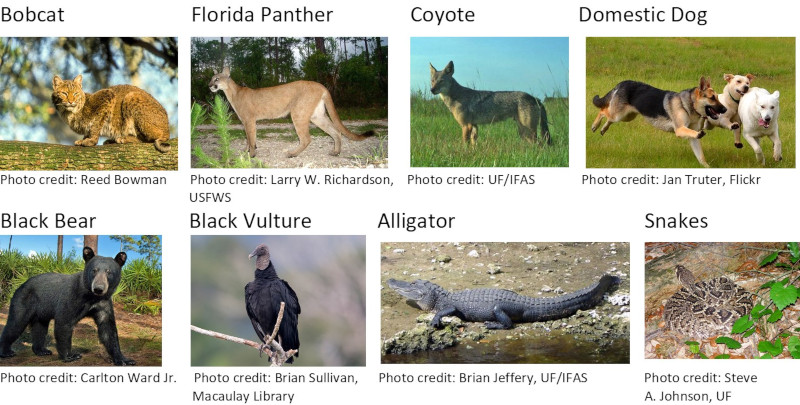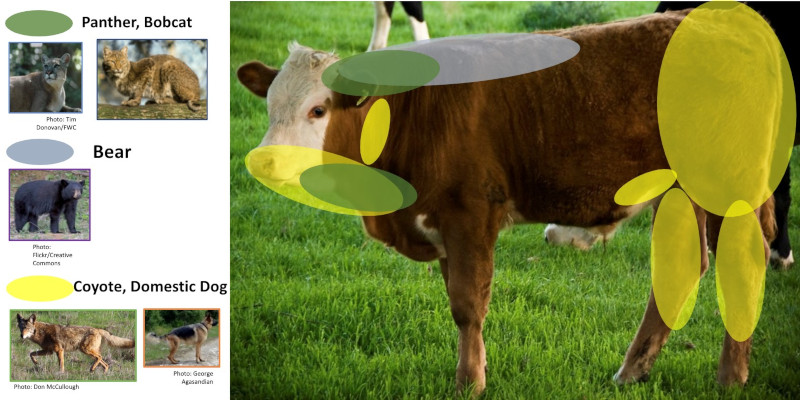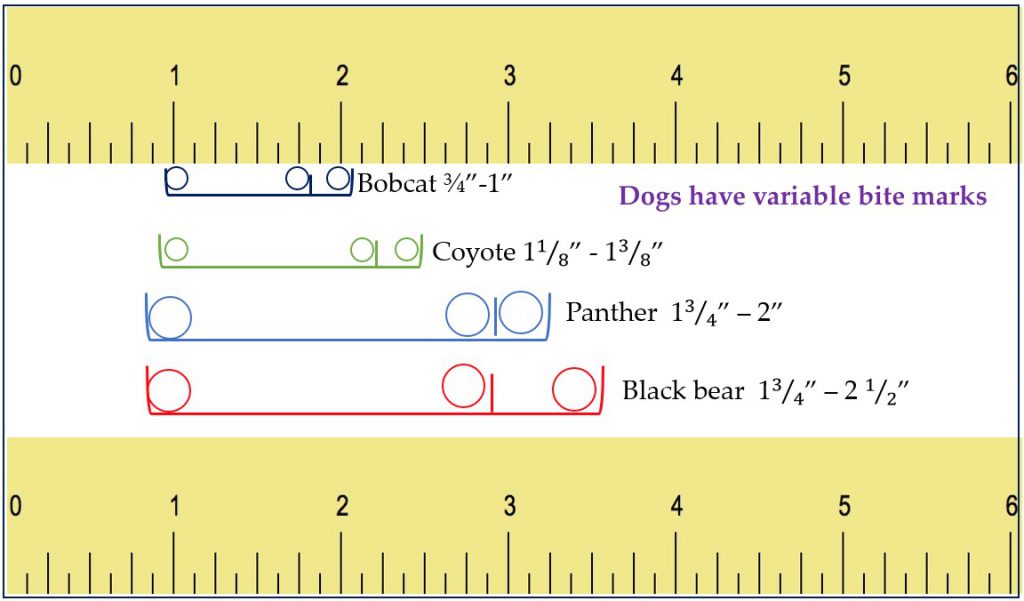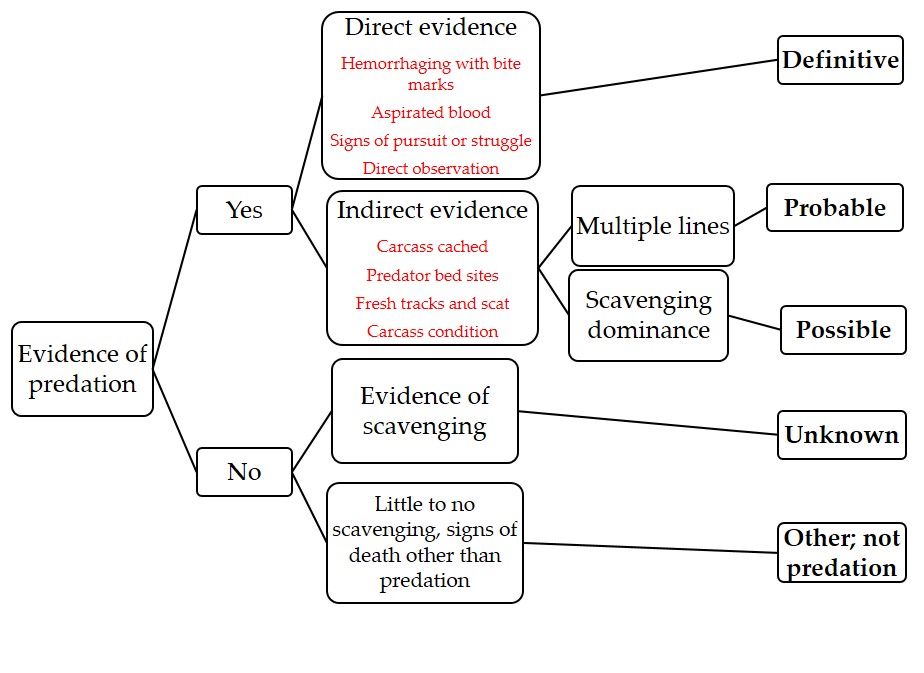By: Hannah Fox, Intern
UF/IFAS Range Cattle Research and Education Center
Livestock loss, and calf loss in particular, is a major issue in Florida. According to the USDA 2015 report on livestock loss, operations in Florida suffered a 4% loss of calves and 25% of this loss was attributed to predation. A study by Dr. Raoul Boughton and Kelly Koriakin conducted from 2016-2019, however, found higher rates of calf loss (13%), but that predation played a less prominent role (3% of loss due to predation).
There are many potential causes of loss, and it’s important to identify the cause of death in a loss event. This blog will focus on identifying losses due to predation.
Why Predator Identification is Important
- To rule out other causes of death, such as infections or birthing difficulties.
- To implement predator-specific management, including removal efforts, risk reduction, and compensation programs.
- To improve knowledge on livestock predation in Florida, by sharing information with your neighbors and researchers.

Systematic Field Investigation
The key goals of a systematic field investigation are to determine if predation was the cause of death, and if so, which predator was involved. For a successful investigation, it is critical to minimize the length of time between death and the investigation and to collect multiple types of evidence.
Safety Considerations
Disturbing some predators can be dangerous. Make noise, stay alert, and work in a team. Additionally, the state of the carcass is unknown, so wear personal protective equipment to avoid disease or parasites.
Five Phases of Investigation
1. Initial overview of carcass site and surrounding area: Attempt to visualize what may have happened from a distance instead of going straight to the carcass.
a. Characterize the surrounding habitat
b. Note presence of scavengers: scavenging can eliminate evidence or give false appearance of predation
c. Look for predator signs, including hair, tracks, scat, and claw marks. Take photos and always include a size reference (ideally a ruler)
d. Look for signs of struggle, blood, and drag trails: what was the prey’s path to the site of death


2. Focus on carcass and immediate carcass site
a. Condition at time of death: body position (natural vs. unnatural death); if a young animal, look at lungs, hooves, and fur to assess if stillborn
b. Messy vs. tidy kill site
c. Length of pursuit
d. Carcass moved or cached, cache coverage
e. Look for predator bed sites nearby
f. Where on the body was the animal attacked? What was the initial feeding pattern?

3. Investigate carcass for signs of hemorrhaging
a. Hemorrhaging occurs from injury and only occurs when an animal is alive
b. Look for swelling and discoloration around puncture holes
c. Measure bite wounds (size of puncture and distance between teeth)
d. Look for aspirated blood – sign of pursuit or struggle

4. Summarize the evidence and its interrelatedness
a. Weight of evidence – What is the majority of the evidence telling you? How confident are you in this conclusion?
5. Event classification: Predation or not

Further Information
For more detailed information on predator identification, check out Dr. Hance Ellington’s webinar “Identifying predators involved in livestock loss” click here.
Dr. Hance Ellington and Bethany Wight of the Rangeland Wildlife Ecology Lab are working on a guide to predator identification that can easily be taken into the field to reference during investigations.

Hannah is a research technician with the Wildlife Ecology Department at UF/IFAS RCREC. She starts her Master of Earth and Environmental Resources Management at University of South Carolina in Fall 2021. If you have any questions, you can contact her at foxhan13@gmail.com.
 0
0
